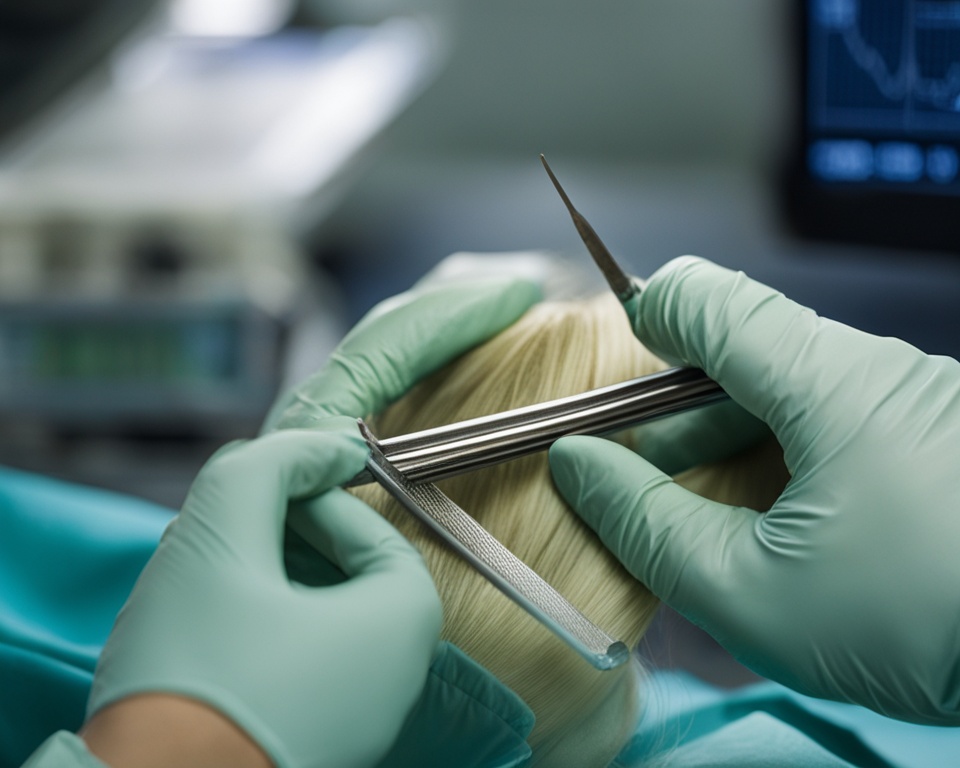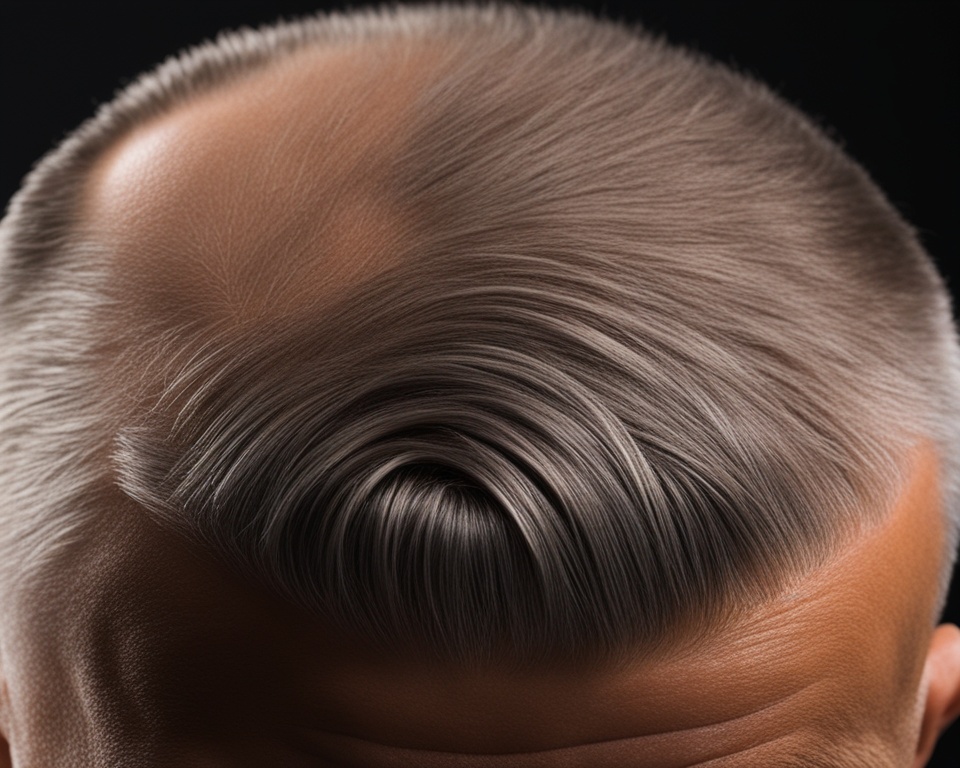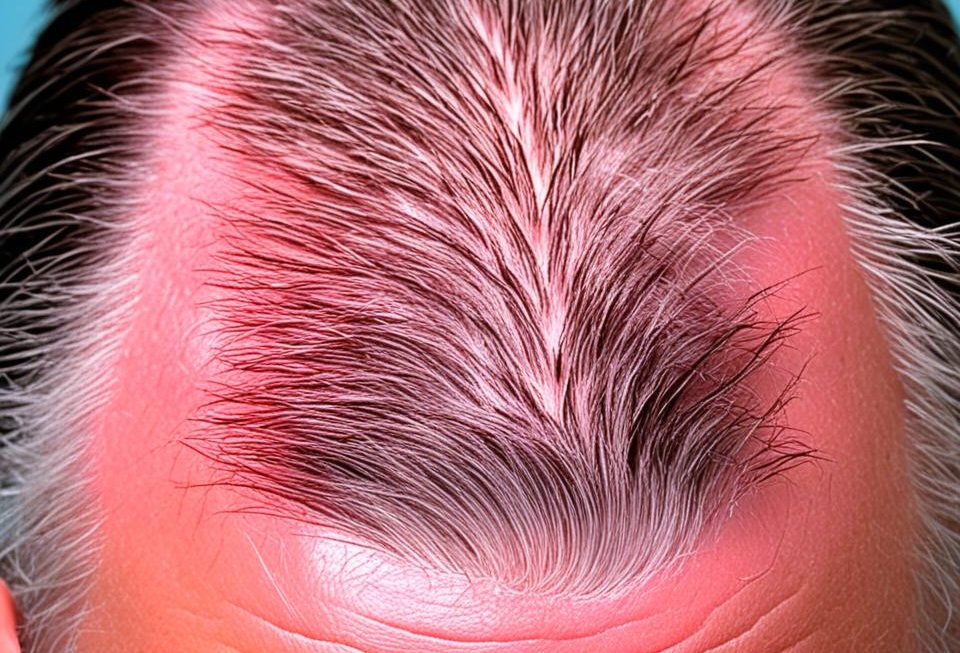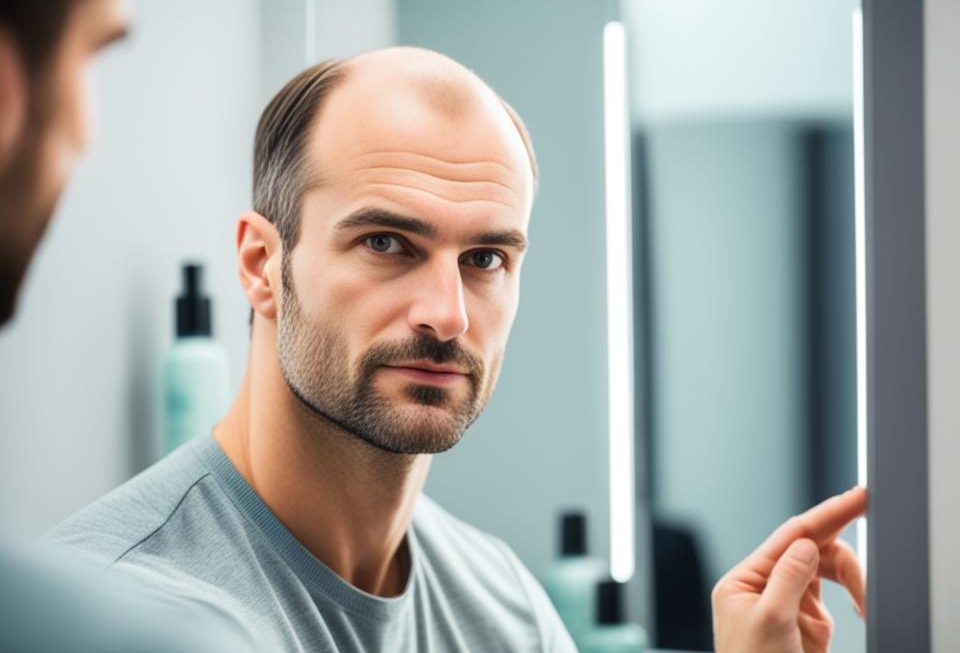Hair plugs have become a key solution for those dealing with hair loss and balding. What was once seen as old-fashioned and unnatural now offers a modern and pleasing way to restore hair. This change has made hair plugs a top choice for people wanting to boost their confidence and have a full head of hair.
Hair loss affects both men and women and can be caused by many things. These include genetics, the environment, and health issues. Luckily, new hair restoration treatments have come to the forefront. They offer solutions that look natural and can help with hair loss.
Hair plugs, also known as hair transplantation or FUE, are at the heart of these new treatments. They move healthy hair follicles from areas with lots of hair to where it’s thinning or bald. This careful process makes the new hair blend in well, giving a natural look that boosts self-esteem and improves life quality.
Read interesting things at : vetocellacvgummies
Key Takeaways:
- Hair plugs are a modern solution for hair restoration, offering a natural-looking and effective solution for those struggling with hair loss.
- Advancements in hair transplantation techniques, such as FUE, have transformed hair plugs into a highly sophisticated and aesthetically pleasing procedure.
- Hair loss can be caused by a variety of factors, including genetic, environmental, and medical conditions, making hair plugs a versatile solution for a wide range of individuals.
- Hair plugs involve the careful extraction and relocation of healthy hair follicles, providing a natural integration and rejuvenated appearance.
- The modern approach to hair plugs has significantly improved the self-esteem and quality of life for those seeking to regain a full head of hair.
Understanding Hair Loss and Its Causes
Hair loss can come from many things like genes, the environment, and health issues. Knowing what causes hair loss helps find the best ways to fix it.
Genetic Factors in Hair Loss
Genetics is a big reason for hair loss. Some people are more likely to lose hair because of their genes. This is known as androgenetic alopecia. It shows up as a receding hairline, thinning at the crown, or less hair overall.
Genes also affect other hair loss types, like alopecia areata. This is when hair falls out in patches. If your family has had these hair loss issues, you might get them too.
Environmental and Medical Contributors
- Things like stress, bad eating, and chemicals can also cause hair loss. Stress can mess up the way hair grows, making it fall out more.
- Some health problems, like thyroid issues, anemia, and hormonal problems, can also lead to hair loss. These need special treatment to help hair grow back.
| Genetic Factors | Environmental Factors | Medical Conditions |
|---|---|---|
| Androgenetic alopecia | Stress | Thyroid disorders |
| Alopecia areata | Poor nutrition | Anemia |
| Hereditary hair loss | Harsh chemicals/toxins | Hormonal imbalances |
Knowing what causes hair loss helps people work with doctors to find the right hair restoration plan. This plan meets their specific needs and worries.
“Identifying the underlying causes of hair loss is the first step towards finding effective solutions.”
Hair Plugs: A Traditional Hair Restoration Technique
The history of hair restoration goes back to the early 1900s. That’s when “hair plugs” became a new way to fight hair loss. This method was the start of today’s hair restoration.
In the 1950s, Dr. Shiro Hashimoto from Japan made a big step forward. He used hair plugs to move small skin grafts from the back to the bald spots. This was called “punch grafting” and changed hair restoration for the better.
As more people tried hair plugs, the method got better. They started using smaller grafts for a more natural look. But, the early methods could make the hair look fake, like a doll’s head.
| Year | Milestone | Description |
|---|---|---|
| 1950s | Punch Grafting | Dr. Shiro Hashimoto introduces the concept of transplanting circular grafts of hair-bearing skin from the back and sides of the scalp to the balding areas. |
| 1980s | Smaller Grafts | The introduction of “mini-grafts” and “micro-grafts” helps to create a more natural-looking hairline and density. |
| 1990s | Follicular Unit Extraction | The development of the Follicular Unit Extraction (FUE) technique allows for a more precise and less invasive hair transplantation method. |
Even with its flaws, hair plugs helped lead to today’s hair restoration. Now, techniques like Follicular Unit Extraction (FUE) and Follicular Unit Transplantation (FUT) give better results. These methods aim for a natural look and lasting results for those with hair loss.
“The history of hair restoration is a fascinating journey, filled with technological advancements and the relentless pursuit of natural-looking results. Hair plugs, with all their limitations, played a crucial role in setting the stage for the modern hair restoration techniques we have today.”
The Evolution of Hair Transplantation Methods
The field of hair restoration has seen big changes over the years. New techniques have changed how people deal with hair loss. Follicular Unit Extraction (FUE) and Follicular Unit Transplantation (FUT) are two key methods that have become well-known.
Follicular Unit Extraction (FUE)
Follicular Unit Extraction, or FUE, is a new way to transplant hair. It takes hair follicles from the scalp one by one. This method doesn’t remove a big strip of scalp like old methods, making it look more natural.
It lets doctors take out follicles carefully and put them where needed. This makes the hair look real and natural.
Follicular Unit Transplantation (FUT)
Follicular Unit Transplantation, or FUT, takes a strip of scalp from the back of the head. Then, it cuts this strip into smaller units. These units are then moved to where the hair is thinning.
This method can move more hair at once, making it good for people with a lot of hair loss. But, it leaves a scar where the strip was taken.
Both FUE and FUT have their own benefits and are popular for fighting hair loss. The choice between them depends on how much hair is lost and the doctor’s skills.
| Technique | Donor Area Harvesting | Scar Visibility | Graft Yield |
|---|---|---|---|
| Follicular Unit Extraction (FUE) | Individual follicle extraction | Minimal to no scarring | Moderate to high |
| Follicular Unit Transplantation (FUT) | Linear strip excision | Linear scar at donor site | High |
Now, hair transplant methods are getting better, offering more personalized solutions. Knowing the differences between FUE and FUT helps patients make good choices. They can work with their doctors to get the look they want.
Choosing the Right Hair Restoration Procedure
There is no single solution for hair restoration that fits everyone. The key to great results is picking a procedure that matches your needs and hair loss patterns. This means talking with a qualified specialist and getting a detailed consultation.
Comprehensive Consultation and Evaluation
Your specialist will look at your scalp and check how much hair you’ve lost. They’ll talk about what you want to achieve and consider your health, lifestyle, and hair type. This helps them find the best option for you.
- Evaluate the extent and pattern of your hair loss
- Assess the quality and density of your existing hair
- Discuss your expectations and desired aesthetic goals
- Recommend the most appropriate hair restoration procedure
Comparing Hair Restoration Procedures
Your specialist will explain the different procedures available, like FUE and FUT, and their pros and cons. They’ll help you understand which one fits your needs best. This includes looking at non-surgical treatments too.
| Procedure | Description | Ideal Candidates |
|---|---|---|
| Follicular Unit Extraction (FUE) | Individual hair follicles are extracted and transplanted to the desired areas. | Patients with sufficient donor hair, no active scalp conditions, and minimal to moderate hair loss. |
| Follicular Unit Transplantation (FUT) | A strip of skin containing hair follicles is removed and transplanted to the recipient area. | Patients with more advanced hair loss, larger areas of baldness, and sufficient donor hair. |
Understanding the different options and what they offer helps you make a choice that meets your goals and preferences.
Choosing the right procedure is a team effort between you and your specialist. By talking openly, you can look at all the options, think about their pros and cons, and find a plan that works for you.
Preparing for a Hair Transplant Surgery
Getting a hair transplant surgery is a big step that needs careful planning. From the first meeting to the steps before surgery, each part is key for a good result. Let’s look at the main steps to get ready for a hair transplant surgery.
Consultation and Evaluation
The first step is meeting with a hair restoration expert. They will check your scalp, see how much hair you’ve lost, and pick the best treatment. They’ll talk about what you want, what you hope to achieve, and any health issues that might affect the surgery.
At the consultation, you’ll go through:
- Detailed medical history review
- Physical examination of the scalp and hair density
- Evaluation of the donor and recipient areas
- Recommendations for the most appropriate hair transplant technique
- Discussion of the expected outcomes and potential risks
This detailed check-up helps the doctor make a plan just for you. It makes sure the hair transplant is the right choice for you.
Pre-operative Instructions
After checking and evaluating, your hair transplant doctor will give you pre-surgery instructions. These are to make sure your surgery goes well and lowers the chance of problems. Some common instructions include:
- Avoiding certain medications, such as blood thinners, for a specified period
- Refraining from smoking and alcohol consumption for a certain duration
- Maintaining good scalp hygiene and avoiding any hair treatments or products
- Arranging for transportation and assistance on the day of the surgery
- Ensuring adequate rest and hydration leading up to the procedure
Following these instructions closely is key for a successful hair transplant and your health during the process.
Understanding the importance of the consultation and following pre-surgery instructions sets you up for a smooth hair transplant surgery. Working with a skilled hair restoration expert and being proactive in getting ready will help you get the look and confidence you want.
The Hair Transplant Process Step-by-Step
Understanding the hair transplant process is key for those thinking about hair restoration. It covers everything from simple hair plug surgery to complex procedures. Let’s explore the steps to help you understand it better.
Preparation and Evaluation
The first step is a detailed consultation with a hair restoration expert. They look at your hair loss, check how much donor hair you have, and evaluate your hair’s health. This helps pick the best treatment for you.
Anesthesia and Incisions
After deciding on the treatment, the next step is anesthesia. This numbs the area to make the procedure painless. Then, the specialist makes tiny, precise cuts in the scalp for the new hair.
Follicular Unit Extraction (FUE)
For FUE hair transplant, the specialist takes out individual hair follicles from the back or sides of your scalp. This method gives a natural look with little to no scars.
Transplantation and Placement
Next, the taken follicles are placed in the new spots. The specialist makes sure the new hair grows naturally, giving you a smooth and natural-looking hairline.
Aftercare and Follow-up
After the procedure, you’ll get detailed care instructions. It’s important to follow these to manage swelling or any discomfort. Regular check-ups are also key to track the new hair’s growth and ensure the best results.
Knowing the hair transplant process helps you make informed choices. This way, you can be confident in your journey to get the hair you want.
| Stage | Description |
|---|---|
| Preparation and Evaluation | Comprehensive consultation and assessment to determine the suitable treatment plan. |
| Anesthesia and Incisions | Scalp is numbed, and small incisions are made to prepare the recipient sites. |
| Follicular Unit Extraction (FUE) | Individual hair follicles are carefully extracted from the donor area. |
| Transplantation and Placement | Extracted hair follicles are meticulously transplanted into the recipient sites. |
| Aftercare and Follow-up | Detailed post-operative instructions and regular monitoring to ensure optimal results. |

“The key to a successful hair transplant is a thorough understanding of the process and working with a qualified specialist who can deliver natural-looking results.”
By following the step-by-step hair transplant process, you can be confident in your journey towards your hair goals. This applies whether it’s through hair plug surgery or a more advanced hair restoration procedure.
Post-operative Care and Recovery
After a hair transplant, taking good care of yourself is key for the best results. This part of the process needs patience and care. The new hair follicles need time to settle and start growing.
Managing Swelling and Discomfort
Swelling and discomfort are common after a hair transplant. These feelings are normal and can be eased with over-the-counter meds, cold compresses, and rest. It’s important to follow your doctor’s advice for a smooth recovery.
Resuming Normal Activities
When you can go back to normal activities depends on the procedure and your body. Most people can start with light activities like work or easy exercises in a week or two. But, avoid hard work, too much sun, and things that might harm the new hair.
As you heal, you can slowly start doing more of your usual activities. Always check with your hair restoration expert to make sure you’re doing it safely.
By following your surgeon’s care instructions and being patient, you can get great results from your hair transplant.
Understanding Hair Plugs: Techniques and Considerations
Hair plug techniques have changed a lot over time. Now, they offer a way to restore hair that looks natural. Knowing about these techniques helps people make smart choices and have the right expectations for their hair plug treatment.
The way the plugs are placed is key for a natural look. Experts use new methods to make sure the new hair looks like it’s always been there. They aim for a smooth transition from the old hairline to the new area.
Choosing the right hairline is also important. Experts look at your face, hair growth, and what you like to make a custom hairline. This makes sure the new hair looks good with your face and doesn’t show it was done.
- Hair plug techniques: New methods like FUE and FUT have changed how hair plugs work. Now, they look more natural.
- Density and distribution: Where and how many plugs are placed is key for a natural look.
- Hairline design: Experts design the hairline to match your face and look good with your hair.
Knowing about hair plug techniques and what to consider helps you make good choices. Working with a specialist, you can get the look you want. Modern hair plug methods make getting a great-looking hairline easier than before.
Achieving Natural-Looking Results with Hair Plugs
Getting a natural look is what people want when they choose natural-looking hair plugs. The way the hair is placed and the design of the hairline are key. They make the results look smooth and pleasing to the eye.
Addressing Density and Distribution
The density and how the hair is spread out are big factors in looking natural. The aim is to mix the new and old hair well, making it look full and even. Experts plan where each graft goes to match the natural way hair grows and looks around it.
They look at the person’s hair type, color, and how it grows. This way, they can make the hair plug density look and feel real. This makes the new and old hair blend together well, giving a fresh and young look.
Hairline Design and Artistry
The way the hairline looks is also very important for natural results with hair plugs. Experts use their skills and artistic eye to make a hairline that fits the person’s face and look.
They map out the hairline, thinking about the face shape, race, and age. By placing the grafts just right and blending the new and old hair, they make a hairline that looks natural. This makes the person look better overall.
Together, the careful hairline design, hair plug density, and distribution make the results look real. This boosts the person’s confidence and how they see themselves.

Maintaining Results and Hair Health
Getting a successful hair transplant is just the start to a fuller, more confident look. Keeping up with your hair after the procedure is key. This means taking good care of your hair and living a lifestyle that supports hair health.
Hair Care After Transplantation
Right after a hair transplant, taking care of your hair is crucial. Your doctor will tell you how to wash your hair, what products to use, and what to avoid. This includes gentle shampooing, avoiding too much heat styling, and using special hair products.
Following these steps is important to keep the new hair safe and help it grow well. Not taking care of your hair after the surgery can affect the results and cause problems. So, make it a key part of your daily routine.
Lifestyle Factors and Maintenance
Looking after your hair in the long run also depends on your lifestyle. Things like what you eat, how you manage stress, and how you protect your skin from the sun can affect your hair.
- Eat foods rich in proteins, vitamins, and minerals to help your hair grow.
- Find ways to reduce stress because too much stress can harm your hair.
- Keep your scalp safe from the sun to prevent damage to the new hair.
- Try to avoid habits that can hurt your hair, like smoking or drinking too much alcohol.
Adding these lifestyle changes to your daily life can help keep your hair looking great and lasting longer after the transplant.
| Hair Transplant Maintenance Factors | Impact on Hair Health |
|---|---|
| Proper Post-Op Hair Care | Protects delicate grafts and promotes healthy growth |
| Nutrient-Rich Diet | Supports hair follicle health and stimulates new growth |
| Stress Management | Helps prevent hair loss and maintain optimal hair condition |
| Sun Protection | Safeguards transplanted follicles from UV damage |
| Avoiding Harmful Habits | Preserves the longevity and appearance of transplanted hair |
By focusing on good hair care after surgery and living a hair-friendly lifestyle, you can keep your hair looking great and lasting longer.
Exploring Alternative Hair Restoration Options
For those dealing with hair loss, traditional hair plugs and transplants are often the first things that come to mind. But now, there are many non-surgical treatments and therapies available. These new options offer a way to address hair loss without surgery.
Non-surgical Treatments
Non-surgical hair restoration has become more popular, offering alternatives to old-school hair plugs and transplants. These methods aim to boost scalp health, improve blood flow, and feed the hair follicles for growth. Some top choices include:
- Laser therapy: This uses low-level lasers to wake up the scalp and hair roots, helping blood and nutrients reach the hair.
- Topical solutions: Products like minoxidil and finasteride are applied to the scalp to fight the balding effects of DHT.
- Platelet-rich plasma (PRP) therapy: This method takes the patient’s own blood, focuses on the platelets, and injects it back into the scalp to activate hair growth.
Complementary Therapies
Alongside non-surgical treatments, complementary therapies are being explored for hair restoration. These focus on overall health and the condition of the hair and scalp. Some of these therapies are:
- Herbal supplements: Herbs like saw palmetto and ginkgo biloba can help block DHT and support hair growth.
- Scalp massage: Massaging the scalp can boost blood flow, wake up follicles, and help new hair grow.
- Dietary modifications: Eating foods rich in biotin, iron, and protein can make hair healthier and promote growth.
These alternative hair restoration methods might not work as fast as surgery, but they’re a gentler way to address hair loss. It’s key to talk to a hair restoration expert to find the best treatment for you.
| Non-surgical Treatments | Complementary Therapies |
|---|---|
| Laser therapy | Herbal supplements |
| Topical solutions | Scalp massage |
| Platelet-rich plasma (PRP) therapy | Dietary modifications |
Choosing a Qualified Hair Restoration Specialist
Finding the right qualified hair restoration specialist is key for great results. Whether you’re looking at a hair transplant surgeon or a trichologist, do your homework. Make sure you pick someone with the right skills and care for your hair.
First, check the specialist’s credentials and experience. They should be certified in fields like dermatology or plastic surgery. Also, they should have a good history of successful hair restoration work. It’s also important they keep up with new hair restoration tech and methods.
How the specialist treats you matters too. A good one will listen to your hair loss issues, give you a detailed check-up, and make a plan just for you. They should be open about the risks, benefits, and what you can expect from the treatment.
- Credentials and certifications, including board certifications in relevant fields
- Years of experience performing hair restoration procedures
- Specialized training in the latest hair restoration techniques
- A patient-centric approach that focuses on your specific needs and goals
- A track record of successful hair restoration outcomes
By doing your homework and picking a qualified hair restoration specialist, you boost your chances of getting results that look natural and last long. This can make you feel more confident and happy with how you look.
“The success of a hair restoration procedure largely depends on the expertise and experience of the provider. Choosing the right specialist can make all the difference in achieving your desired outcome.”
The Science Behind Hair Plugs and Restoration
Understanding the science behind hair plugs and restoration is key to getting natural-looking results that last. At the heart of this science is the study of the follicular unit. This is the basic unit of healthy hair growth.
Follicular Unit Biology
The scalp has thousands of follicular units. Each unit has 1 to 4 hair shafts, a sebaceous gland, and an arrector pili muscle. These units are the building blocks of modern hair restoration.
By taking and moving these units, experts can use the hair’s natural growth to make results look seamless. This method, called Follicular Unit Extraction (FUE), is a big step forward in science of hair plugs and hair transplant tech.
Advances in Transplantation Technology
The hair transplant technology has seen big improvements over time. These changes have made the process more precise, efficient, and better looking. Tools like motorized extractors and magnified systems have helped evolve follicular unit biology-based hair transplants.
Thanks to these new tools, specialists can move follicular units with little damage. This makes the new hair look natural and blend well with the rest of the hair. So, modern hair plugs and methods can give great results, bringing back the look and confidence of those with hair loss.
| Technological Advancement | Benefit |
|---|---|
| Motorized Extractors | Increased precision and efficiency in extracting individual follicular units |
| Magnified Visualization Systems | Enhanced visibility and control during the extraction and implantation process |
| Specialized Implantation Techniques | Improved integration and natural appearance of transplanted hair |
“The science of hair plugs and restoration is a constantly evolving field, with innovative technologies and techniques paving the way for more natural-looking and sustainable hair transplant results.”
Patient Testimonials and Success Stories
When it comes to hair restoration, the true test is in real-life experiences. Our clinic sees life-changing journeys of patients. Their stories inspire others to regain confidence and self-image.
Sarah, a busy professional in her 30s, struggled with thinning hair and a receding hairline. She tried many treatments but nothing worked. Then, she found our clinic and got a customized treatment plan.
“The results have been truly remarkable. I now have a fuller, more youthful-looking hairline, and my self-confidence has skyrocketed. It’s like I’ve been given a new lease on life.”
Michael had hair loss due to a genetic condition. He was hesitant but our team explained the hair plug process clearly. The procedure was easy, and the results were better than he expected.
- Real-life results that speak for themselves
- Transformative journeys of hair restoration success
- Testimonials that inspire and encourage others to explore their options
These stories show the impact of hair restoration at our clinic. We share these real-life results to inspire others. Hair plugs and other techniques can change lives.
If you’re dealing with hair loss, our experts can help. Contact us for a consultation. Take the first step towards regaining your confidence and hair.
Conclusion
In this article, we looked into modern hair restoration solutions, especially hair plug techniques. We covered why people lose hair and how hair transplantation has changed over time. This gives us a full view of how to deal with hair loss.
Hair plugs have changed a lot, now giving results that look natural. They fix issues like thinning, uneven hair, and the shape of your hairline. New methods like Follicular Unit Extraction (FUE) and Follicular Unit Transplantation (FUT) have changed the game. They offer custom solutions for each person’s hair loss needs.
If you’re looking into hair loss treatments, talk to experts in hair restoration. They can guide you through the options, including hair plugs and other modern solutions. This way, you can get the best results and keep your hair healthy and full for a long time.



